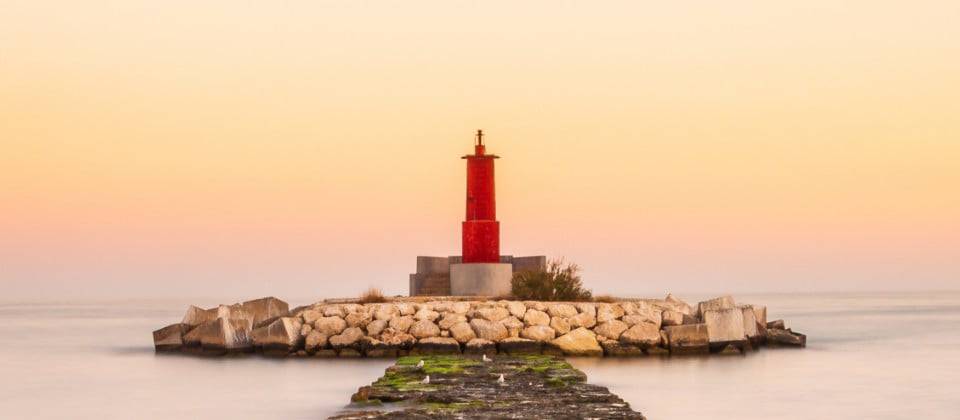How Spain's southern coast became a tourist paradise: the history of the Costa Blanca
5 Apr 2018
Enough skyscrapers to rival Manhattan, a nightlife that never, ever sleeps - and rarely even takes a siesta - and beaches that in summer are akin to battery farms.... Benidorm is undoubtedly one of Spain's busiest beach towns, a beacon of mass tourism on the
heavenly Costa Blanca.
It wasn't always like this. In the 1950s, Benidorm is a sedate coastal village, where a few thousand souls (over)live by grace of the Mediterranean Sea. Fishing is by far the most important economic activity. Even then, the beach is of true beauty, the azure waters clear as crystal and the hospitable locals welcome any lost tourist like a long-lost friend.
Only: there are no tourists in the 1950s. There are no discos, bars or restaurants, no Sticky Vicky or Benidorm Bastards in electric wheelchairs, no British lobsters in swim shorts who have poured just a little too much
cerveza
and Jäger bombs poured into their kettles. Just a fishing port and a
cantina
where you can get a few scoops of paella for very little money.
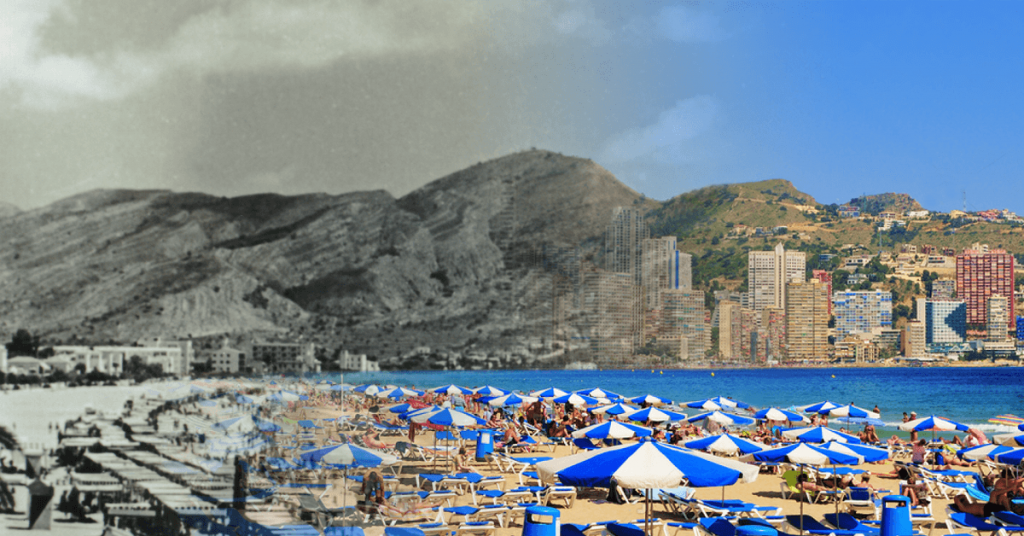
A local who slips into a coma in 1950s Benidorm and now awakens can never guess that this is the same city. But how did Benidorm - and the entire Costa Blanca in its wake - become the vacation capital of Europe in three quarters of a century?
The short answer: thanks to a visionary Spaniard with a mustache and pants full of motor oil and a car salesman from Ostend. For the long answer, please read on.
No nail to their
culos
to scratch
Anno 2018, it seems like the Costa Blanca was destined to entice tourists. Delicious food, 320 days of sunshine a year, hardly any rain: you would have to be a grumbler not to enjoy being here.
But when one Pedro Zaragoza hangs the mayor's sash of Benidorm around his loins in 1950, the reality is completely different. Spain is still slowly catching its breath from the Civil War that tore its people apart, immediately followed by World War II. In other words, the country is at a standstill, the economic opportunities are scarce, the people poor.
You should not tell Zaragoza that. Born and raised in Benidorm, he comes from a family of seafarers who barely have a nail to scratch their
culos
scratch. Benidorm has only 102 hotel rooms at that time, but Zaragoza is no owl: he sees that he is living in paradise on earth. He wants to turn the fishing village into a tourist paradise.
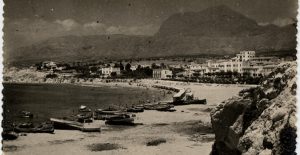
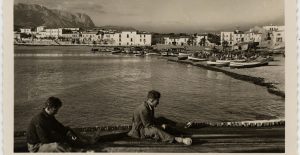
[caption id="attachment_2628" align="aligncenter" width="300"]
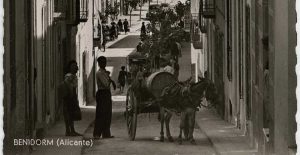
Benidorm before the boom: sleepy fishing village[/caption]
First bikinis of Spain
Zaragoza travels all over Europe promoting its city. In Stockholm, he leaves almond branches with blossoms in shopping malls, he ships Valencian wine to the Queen Elizabeth of England and plants orange trees in honor of Charles de Gaulle. He sends its harvest to him. This is how he put Benidorm on the map. But it takes more for dominance.
During the same time period, French girls - ever ahead of the rest of Europe in terms of mores - start wearing two-piece swimwear. The sneakers are named bikini, after the atoll in the Pacific Ocean where the United States tests its atomic bombs. Zaragoza notices the trend and introduces it to the Costa Blanca. Benidorm is the first place in prudish Spain where ladies are not required to bathe in an all-concealing bomb bathing suit.
The perversion! Moral outrage is his portion. The mob is on its hind legs for so much provocation and scandal. Catholic archbishops want to excommunicate Zaragoza. But the man gets exactly what he wants: Benidorm at the center of attention and at the forefront of the revolution.
[caption id="attachment_2633" align="aligncenter" width="300"]

Thanks to Pedro Zaragoza, the people of Benidorm were the first to see it.[/caption]
With the fine of 40,000 pesetas, he is less happy. Zaragoza climbs on his Vespa and gets off only nine hours later, and 400 kilometers away. Just in front of General Francisco Franco in Madrid. There he not only complains about the lackluster beach dress code.
He also argues that Spain would benefit from swinging open its doors to tourists. With success. "Franco was amused by the small, round man with a mustache and motor oil on his pants," The Economist wrote of the historic encounter. "The dictator was suddenly a fan."
BeniYork
And so Zaragoza gets free rein in Benidorm to realize his vision. He draws out a plan to develop the city - not in height but in width. The towering buildings should allow more visitors to admire the beaches from their rooms and breathe in the healthy sea air from their balconies.
It kicks off Benidorm as a "vertical" city. More than fifty new hotels opened in the 1960s, and thirty more in the following decade. Whereas in the late 1950s there were 3,000 people living in Benidorm, by 1970 there were 12,000, mostly workers who came to serve the streams of tourists at their beck and call.
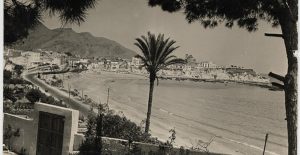

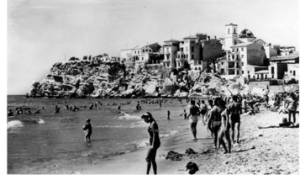
[caption id="attachment_2632" align="aligncenter" width="300"]
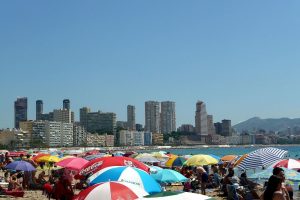
Benidorm through the years: from fishing village to tourist paradise.[/caption]
There the foundations are being laid for the "BeniYork" as you know it. Planned streets and wide boulevards flush with beaches do the rest. Benidorm is becoming the Manhattan of the Mediterranean.
And that draws people, lots of people.
For the visionary Zaragoza does not build a castle on clouds. He also predicted the tourism boom perfectly. The middle class of northwestern Europe grew rapidly in the golden 1960s. The concept of vacation is changing. It may be just a little more than a weekend in Bredene from now on.
[caption id="attachment_2634" align="aligncenter" width="300"]
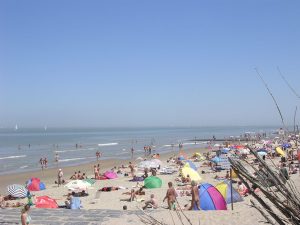
Beware, nothing against Bredene.[/caption]
At the same time, the first tour operators are making their appearance. These throng tourists to the Costa Blanca in hordes. Benidorm is becoming the classic example of sun-sea-and-beach tourism.
The Man Who Taught His People to Know Benidorm
One of those first tourists was Gerard Brackx, a real middle class man from Ostend.
As a car salesman in his father-in-law's firm, he notices that some buses remain in storage for an entire winter. Brackx is a full-blooded entrepreneur and under his cranium the cogs are starting to turn. Can't we make those buses, he wonders, pay off somehow? And so he soon organized trips to Tyrol, Nice and Lourdes. When he first sees Benidorm, in 1964, he immediately realizes: this is a gold mine.
Brackx, meanwhile, founded Jetair and is making a name for himself as a tour operator. He shows tens of thousands of
Belgians the way to the Costa Blanca. At first, he lodges them in small, local hotels, but that remains makeshift. So in 1970 he built Hotel Belroy, ever since a home away from home for all Belgians, where Jupiler flows from the tap and the fries are fried as crispy as in the fryer under the Flemish church tower.
Without Brackx, Benidorm would never have reached such mythical status with the Belgian population. That is why the man, who died in Ostend in 2011 at the age of 80, is still regarded among us as the "discoverer" of Benidorm. Today, some 8,000 Belgians live permanently in the former fishing village; 250,000 others go there on vacation every year.
Dreaming of sun, sea and beach
And they are by no means the only ones. In 2012, Benidorm welcomed two million visitors, accounting for 11 million overnight stays. Zaragoza's vision of Benidorm as a vertical city has been fully realized. With 330 skyscrapers, no place on earth has a higher density per population. Only Manhattan has more skyscrapers per square meter.
[caption id="attachment_2622" align="aligncenter" width="300"]

Benidorm anno 2018: Manhattan on the Mediterranean Sea[/caption]
And all those tourists, they don't just stay in Benidorm.
They discover the region around it - the beaches towards Alicante and towards Calpe, as well as the rich interior. Its golden sands, blue skies and pleasantly warm sea have immense appeal to people from climatically less fortunate regions of Europe. It makes Costa Blanca one of the world's top destinations for anyone who dreams of sun, sea and beach.
And no bishop is going to lie awake over a bikini bottom that is of little consequence. Fortunately.
 A local who slips into a coma in 1950s Benidorm and now awakens can never guess that this is the same city. But how did Benidorm - and the entire Costa Blanca in its wake - become the vacation capital of Europe in three quarters of a century?
The short answer: thanks to a visionary Spaniard with a mustache and pants full of motor oil and a car salesman from Ostend. For the long answer, please read on.
A local who slips into a coma in 1950s Benidorm and now awakens can never guess that this is the same city. But how did Benidorm - and the entire Costa Blanca in its wake - become the vacation capital of Europe in three quarters of a century?
The short answer: thanks to a visionary Spaniard with a mustache and pants full of motor oil and a car salesman from Ostend. For the long answer, please read on.

 [caption id="attachment_2628" align="aligncenter" width="300"]
[caption id="attachment_2628" align="aligncenter" width="300"] Benidorm before the boom: sleepy fishing village[/caption]
Benidorm before the boom: sleepy fishing village[/caption]
 Thanks to Pedro Zaragoza, the people of Benidorm were the first to see it.[/caption]
With the fine of 40,000 pesetas, he is less happy. Zaragoza climbs on his Vespa and gets off only nine hours later, and 400 kilometers away. Just in front of General Francisco Franco in Madrid. There he not only complains about the lackluster beach dress code.
He also argues that Spain would benefit from swinging open its doors to tourists. With success. "Franco was amused by the small, round man with a mustache and motor oil on his pants," The Economist wrote of the historic encounter. "The dictator was suddenly a fan."
Thanks to Pedro Zaragoza, the people of Benidorm were the first to see it.[/caption]
With the fine of 40,000 pesetas, he is less happy. Zaragoza climbs on his Vespa and gets off only nine hours later, and 400 kilometers away. Just in front of General Francisco Franco in Madrid. There he not only complains about the lackluster beach dress code.
He also argues that Spain would benefit from swinging open its doors to tourists. With success. "Franco was amused by the small, round man with a mustache and motor oil on his pants," The Economist wrote of the historic encounter. "The dictator was suddenly a fan."


 [caption id="attachment_2632" align="aligncenter" width="300"]
[caption id="attachment_2632" align="aligncenter" width="300"] Benidorm through the years: from fishing village to tourist paradise.[/caption]
There the foundations are being laid for the "BeniYork" as you know it. Planned streets and wide boulevards flush with beaches do the rest. Benidorm is becoming the Manhattan of the Mediterranean.
And that draws people, lots of people.
For the visionary Zaragoza does not build a castle on clouds. He also predicted the tourism boom perfectly. The middle class of northwestern Europe grew rapidly in the golden 1960s. The concept of vacation is changing. It may be just a little more than a weekend in Bredene from now on.
[caption id="attachment_2634" align="aligncenter" width="300"]
Benidorm through the years: from fishing village to tourist paradise.[/caption]
There the foundations are being laid for the "BeniYork" as you know it. Planned streets and wide boulevards flush with beaches do the rest. Benidorm is becoming the Manhattan of the Mediterranean.
And that draws people, lots of people.
For the visionary Zaragoza does not build a castle on clouds. He also predicted the tourism boom perfectly. The middle class of northwestern Europe grew rapidly in the golden 1960s. The concept of vacation is changing. It may be just a little more than a weekend in Bredene from now on.
[caption id="attachment_2634" align="aligncenter" width="300"] Beware, nothing against Bredene.[/caption]
At the same time, the first tour operators are making their appearance. These throng tourists to the Costa Blanca in hordes. Benidorm is becoming the classic example of sun-sea-and-beach tourism.
Beware, nothing against Bredene.[/caption]
At the same time, the first tour operators are making their appearance. These throng tourists to the Costa Blanca in hordes. Benidorm is becoming the classic example of sun-sea-and-beach tourism.
 Benidorm anno 2018: Manhattan on the Mediterranean Sea[/caption]
And all those tourists, they don't just stay in Benidorm. They discover the region around it - the beaches towards Alicante and towards Calpe, as well as the rich interior. Its golden sands, blue skies and pleasantly warm sea have immense appeal to people from climatically less fortunate regions of Europe. It makes Costa Blanca one of the world's top destinations for anyone who dreams of sun, sea and beach.
And no bishop is going to lie awake over a bikini bottom that is of little consequence. Fortunately.
Benidorm anno 2018: Manhattan on the Mediterranean Sea[/caption]
And all those tourists, they don't just stay in Benidorm. They discover the region around it - the beaches towards Alicante and towards Calpe, as well as the rich interior. Its golden sands, blue skies and pleasantly warm sea have immense appeal to people from climatically less fortunate regions of Europe. It makes Costa Blanca one of the world's top destinations for anyone who dreams of sun, sea and beach.
And no bishop is going to lie awake over a bikini bottom that is of little consequence. Fortunately.









